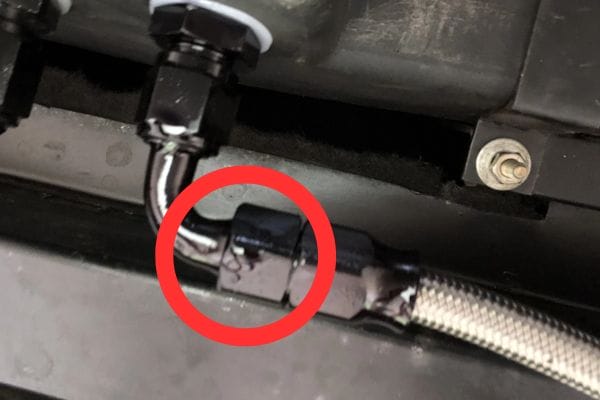AN fittings are essential components in performance-critical fluid systems, commonly found in motorsports, aerospace, and industrial machinery. While known for reliability, leaks or malfunctions can occur due to vibration, thermal cycling, or improper installation. This post aims to provide a comprehensive, step-by-step troubleshooting guide for AN fitting repairs. Readers will gain valuable insights into diagnosing common issues, performing effective repairs, and maintaining these critical components to extend their lifespan and enhance system performance.
AN fittings, while designed for durability and high performance, can encounter several common issues that affect their functionality. Understanding these problems and their impacts is crucial for effective troubleshooting and maintenance.

When performing repairs on AN fittings, having the right tools is crucial for accurate and efficient work. Key tools include:
To effectively repair AN fittings, you will need several materials:
Visual Inspection
The visual inspection is the first step in assessing the condition of AN fittings. Start by examining the fittings and surrounding components for any obvious signs of wear or damage. Look for:
Functional Testing
Once the visual inspection is complete, conduct functional testing to ensure the fittings operate correctly under pressure. This involves:
Diagnosing issues with AN fittings involves careful observation and systematic evaluation. Begin by:
By combining visual inspections with pressure and flow tests, you can accurately diagnose the common issues affecting your AN fittings.
Once the problem is identified, proceed with disassembly:
Proper disassembly ensures that you can effectively access and repair the fitting without causing additional damage.
After disassembly, thoroughly clean and inspect the components:
Detailed cleaning and inspection help ensure that you address all potential issues and prevent future problems.
Decide whether to repair or replace parts based on their condition:

Reassembling AN fittings requires precision to ensure that all components are correctly aligned and securely fastened. Follow these steps for a successful reassembly:
Testing is crucial to verify that the repaired AN fittings are functioning correctly and are free of leaks. Follow these steps to conduct effective testing:
To prolong the life of AN fittings and ensure reliable performance, adhere to these regular maintenance practices:
Preventing issues before they arise is key to maintaining the longevity and performance of AN fittings. Here are some preventative measures to consider:
In summary, effective AN fitting repair involves a thorough understanding of common issues, precise troubleshooting, and diligent maintenance. With the right tools, knowledge, and adherence to best practices, you can confidently manage AN fitting repairs and maintenance, ensuring your systems remain reliable and operational.
🛠️ Need quality replacement fittings or seal kits? Contact Topa for certified AN fittings, custom kits, and expert technical support.
AN fittings, short for Army-Navy fittings, are used in high-pressure hydraulic and fuel systems. They are known for their durable design and are commonly used in aerospace, automotive, and industrial applications.
Common signs of issues include leaks, visible damage or cracks, and irregular fluid flow. Conduct a visual inspection, pressure test, and flow test to diagnose problems.
Essential tools include wrenches, pliers, a torque wrench, and tubing cutters. For cleaning, use appropriate solvents and brushes to remove debris.
Ensure the system is depressurized and drained. Use the correct wrenches to gently loosen and remove the fittings, avoiding excessive force to prevent damage.
Repair minor wear or damage, like re-threading threads or replacing seals, if the component is still structurally sound. Replace parts with significant damage or corrosion, such as cracked fittings or worn O-rings.
Perform regular inspections, clean fittings regularly, monitor system pressure, and use proper sealants. Store fittings in a clean, dry place and protect them from corrosive substances.